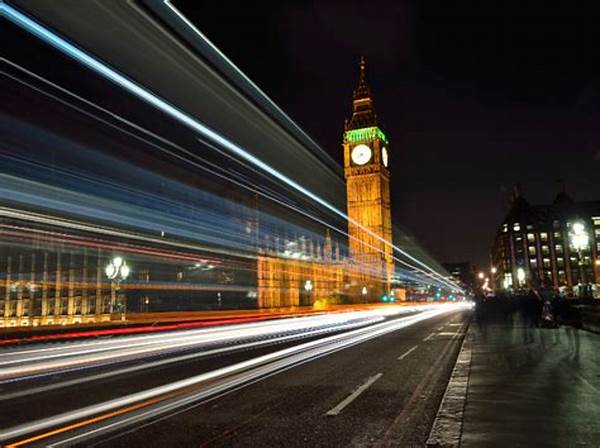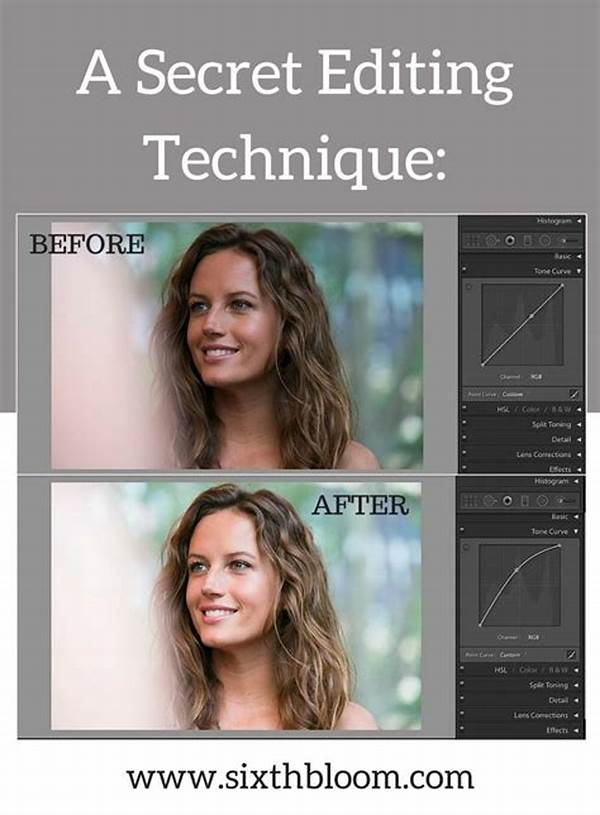Hey there, photography enthusiasts! Are you ready to dive into the bright and vibrant world of light trails? Whether you’re a seasoned photographer or just starting out, capturing light trails can be an incredible way to add a touch of magic to your nighttime shots. Imagine cityscapes bathed in a gentle glow, with streaks of light painting dynamic paths across your frames. In this article, we’ll be exploring everything you need to know about techniques for capturing light trails. So grab your camera, and let’s get started!
Read Now : Essential Tools For Minimalist Editing
Mastering Long Exposure Shots
Capturing light trails starts with understanding the magic of long exposure photography. This technique allows you to capture the movement of light over a prolonged period. Essentially, your camera’s shutter stays open for longer, allowing in more light and creating those captivating trails. To get started, you’ll need a camera with manual settings or a dedicated long-exposure feature. Ensure it’s mounted on a sturdy tripod to prevent any unwanted blur from camera shake.
Experimenting with shutter speed is key here. Start by setting your camera to a lower shutter speed, around 10 to 30 seconds, to let those light trails beautifully form across your image. Thanks to the techniques for capturing light trails, you can create everything from gentle arcs to dense ribbons of light. Remember also to manage your camera’s aperture and ISO settings to achieve the right exposure—usually, a smaller aperture (higher f-number) and low ISO work well in nighttime settings. Lastly, timing matters, so scout your location and plan your shot before the magic happens.
Now, here’s the fun part: composition. Consider your scene—are you near a busy road with cars whisking by, or perhaps near a festive event with moving lights aplenty? Use these elements creatively. With techniques for capturing light trails, you can enhance the scene, adding depth and interest to your photos. Play around, make mistakes, and most importantly, have fun. That’s the beauty of photography, after all!
Gear Essentials
Success in techniques for capturing light trails starts with the right gear. A sturdy tripod is non-negotiable to avoid camera shakes. Don’t forget a remote shutter release to reduce vibrations or a timer setting can help. Having a lens with a good range of apertures is useful to control light effectively.
Keeping your camera steady is crucial in techniques for capturing light trails. Tripods are key, but sometimes, a bean bag or a steady surface will do the trick. Get inventive with what you have around you, especially if you’re improvising on the go.
Lenses play a huge role in techniques for capturing light trails. Wide-angle lenses help you capture more of those vibrant trails in a single frame. They bring out the grandeur of urban sceneries mixed with colorful lights, offering a visual treat.
Don’t overlook your camera settings when exploring techniques for capturing light trails. Adjust your ISO to minimize noise, especially in low-light conditions. Try keeping it around 100 to 400 for the crispest shots that scream quality.
Lastly, practice is your biggest ally in perfecting techniques for capturing light trails. Don’t be afraid to try different settings, angles, and times of day. The more you experiment, the more you discover what works best for your creative vision!
Capturing Creative Compositions
Techniques for capturing light trails aren’t just about the technical details; they’re also about composition. Think about the angle and how the light trails lead the viewer’s eye through the photo. Strong leading lines can add a dynamic sense of movement to your image, enhancing its visual impact.
Consider incorporating stationary objects to contrast with the moving lights. Structures like bridges or buildings can anchor your photo, emphasizing the fluidity of the trails. Using techniques for capturing light trails in this way enriches your story-telling, making the image much more than a simple light capture.
Timing and patience are also essential in techniques for capturing light trails. Sometimes it’s about waiting for the perfect moment, like when traffic picks up or when the light from the golden hour transitions into the cool blues of evening. Each moment offers unique opportunities for creativity.
Common Mistakes and How to Avoid Them
In the world of techniques for capturing light trails, mistakes are part of the learning curve. Here are some hurdles you might encounter:
1. Camera Shake: Secure that tripod and use a remote release!
2. Overexposure: Watch your exposure settings and adjust ISO and aperture accordingly.
3. Wrong Timing: Study traffic patterns or light routines to hit those perfect moments.
4. Focusing Trouble: Use manual focus in nighttime settings for the best clarity.
5. Cluttered Composition: Simplify your frame to highlight those dazzling trails.
Read Now : Minimalist Design Visual Impact
6. Wrong Shutter Speed: Experiment to find a sweet spot for the light effect you want.
7. Lighting Conditions Not Ideal: Test shots are your friend. Make adjustments as necessary.
8. Ignoring Weather: Cloudy or wet nights can add reflections and an atmospheric touch.
9. Missing Equipment: Plan ahead to ensure you have all necessary gear.
10. Lack of Patience: Good things take time. Enjoy the process!
Bringing It All Together: Storytelling with Light
When you get into techniques for capturing light trails, it’s less about capturing light and more about creating a narrative through your lens. Every frame holds a potential story, waiting to unfold in the trails you capture. It’s about sitting back, absorbing your environment, and imagining the stories these lights can tell.
Creating a narrative might mean finding a bustling city street where the movement is constant, or perhaps a quiet road where only a whisper of light emerges sporadically. These trails, both vibrant and subtle, can narrate tales of speed, serenity, and even solitude. With techniques for capturing light trails, you’re not just photographing the literal; you’re imbuing your shots with emotion and atmosphere.
Remember, light trails are a creative tool that allows you to play with time in your photography. It’s all about coaxing stories out of the mundane movements of vehicles, capturing the energy of a city, or depicting the quiet dance of lights at a vibrant event. Mastering these techniques for capturing light trails elevates your work from simple shots to a dynamic visual storytelling approach, enticing viewers to step into your world, even if only for a moment.
Express Your Style: Light Trails as Art
Hey, fellow shutterbugs! Let’s be real—techniques for capturing light trails aren’t just for pixel-perfect shots. They’re for creating art! Imagine a bustling night street, camera in hand, ready to paint with light. Whether you’re going for that super sharp cityscape or an abstract dance of lights, this is your stage.
Picture this: you’re blending movement and time, almost like a choreographer arranging a dance for fireflies. Dang, it’s a vibe! You get to be Picasso with a camera, literally painting your frame. Playing with aperture, shutter speed, and color—it’s like your own photography playground.
So, don’t stress the numbers too much. Focus on what vibe you want to express. It’s about feelings, the rush of a moment, and how these fleeting trails weave stories and emotions. When you master techniques for capturing light trails, it’s like sipping a fresh brew of creativity, making night life sparkle across your photos. Keep it fresh and quirky, and most importantly, make it yours.
Wrapping Up the Light Show
So, what have we learned on this luminous journey through the techniques for capturing light trails? We’ve explored some essential gear, mulled over compositions, dodged common blunders, and even dipped our toes into narrative photography’s creative pool. There’s a bit of a learning curve, sure, but isn’t that part of the fun?
With these techniques for capturing light trails, your photography can evolve; imagine standing in the heart of the city, surrounded by a symphony of lights. Your task? To capture not just images, but moments loaded with color, energy, and stories. Remember, photography is about experimentation. Don’t get bogged down in perfection; instead, let curiosity guide you.
The next time you’re out after sundown, camera in hand, remember, that the entire cityscape is your canvas. Each shot is another brushstroke in your unique visual narrative; embrace it. So get out there, try different settings, and let those light trails dance across your compositions. Happy shooting!



